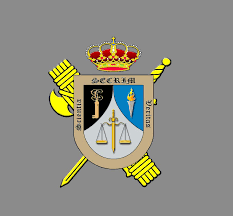Driving in Spain
Are You Allowed To Exceed The Speed Limit While Overtaking?
You might have heard a lot of people talking about this question, and the answer is both yes, and no. But, mostly no! According to Article 51 of the Reglamento General de Circulación: “The maximum fixed speeds for conventional roads Read More …
You might have heard a lot of people talking about this question, and the answer is both yes, and no. But, mostly no!

According to Article 51 of the Reglamento General de Circulación: “The maximum fixed speeds for conventional roads which do not pass through urban areas may only be exceeded by up to 20kph by saloon cars and motorcycles whilst overtaking other vehicles travelling at lesser speeds.”
This clause first came about to allow cars to pass a slower moving vehicle in the shortest time possible, allowing an increase in speed in order to execute the move quickly. The word ‘execute’ being a potential reminder though that overtaking is one of the most dangerous manoeuvres we can carry out. IN the event of a head-on collision, our speed is added to that of the oncoming vehicle, and so a crash where two vehicles are travelling at 90 kilometres per hour is the equivalent of crashing at 180 kilometres per hour, when the two speeds are combined.
But the rule does exist and does allow drivers to go over the speed limit, but only in certain circumstances. In order to simplify the explanation, let us break it down to see when this clause can actually apply.
Firstly, we can see that it can only ever apply to cars and motorcycles, so we know the sort of vehicle the allowance applies to.
Secondly, we need to look at the types of roads the clause can apply to. We can see that it is not permitted on motorways. We can also see that it does not apply on dual carriageways. So, we can exclude faster moving roads straight away. Next, we see that the clause does not apply in towns, or cities for that matter, so we can exclude those routes too.
Now, all that we are left with is so-called conventional roads, single carriageway, with no central reservation and outside of towns. But, then we have to take away those for which a speed limit already applies, because, that speed limit overrules this clause too.
In other words, if you see a sign (which is called the R-301) that limits the maximum speed of a road to 70 kilometres per hour, then the maximum is 70 kilometres per hour and this exceptional speeding clause does not apply. The same if the R-301 sign limits the speed to 50 or 40, or whatever the speed restriction, that sign overrules the clause. In other words, you are NOT permitted to exceed the speed limit for any reason, including overtaking.
You might remember if you are a UK trained driver of an idea called the “National Speed Limit”. There is a sign which is displayed on those roads where the national limit, or to put it another way, the maximum but standard limit applies.
The same exists here in Spain. On a conventional road, the maximum permitted speed on a road where no other signs indicate a restriction, and there is a hard shoulder of more than 1.5 metres, is 100 kilometres per hour. On other conventional roads, the maximum permitted speed is 90 kilometres per hour. This is what we might refer to as the “National Speed Limit” in UK terms. Incidentally, these roads do sometimes have an R-301 sign too, but on these roads it serves as a reminder only.
So, the only road where this clause can apply is a conventional road, where no overruling speed limit applies.

The conclusion is that if you think you have discovered a “get out of jail free card” with this clause, or if it is a license to speed using overtaking as an excuse, think again. The circumstances where this clause can apply really are few and far between, it is not the answer to any speeding motorist’s prayers. It is a clause that can permit the smooth flow of traffic on certain routes, but, as with any traffic laws, safety and security will always come first.
Reglamento General de Circulación (artº 51): “Las velocidades máximas fijadas para las carreteras convencionales que no discurran por suelo urbano solo podrán ser rebasadas en 20 kilómetros por hora por turismos y motocicletas cuando adelanten a otros vehículos que circulen a velocidad inferior a aquellas”
-

 Crime and Policing2 weeks ago
Crime and Policing2 weeks agoWarning issued over latest text message scam
-

 Driving in Spain2 weeks ago
Driving in Spain2 weeks agoHow Long Does it take to Receive a Traffic Fine Through the Post?
-

 News2 weeks ago
News2 weeks agoYour Task for This Week is to Seek Out a Monument – The Week Ahead
-

 Daily Brief2 weeks ago
Daily Brief2 weeks agoSpain Today – Friday 12 April 2024


















